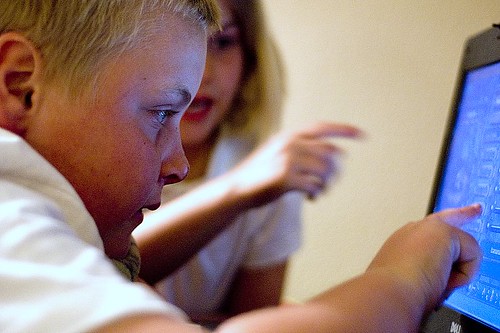
Blue Glow, a photo by Jim Sneddon on Flickr.
Storytelling is used by people all over the world to entertain, teach, share information, create bonds and much more. Digital storytelling takes this even further. According to the University of Houston's page about the Educational Uses of Digital Storytelling, "digital stories usually contain some mixture of computer-based images, text, recorded audio narration, video clips and/or music". Digital stories can vary in length and can be about just about any topic, "from personal tales to the recounting of historical events, from exploring life in one's own community to the search for life in other corners of the universe, and literally, everything in between". Digital storytelling allows for personalization and individuality, which creates a stronger sense of ownership over the work. In 7 Things You Should Know About Digital Storytelling, the author points out that digital stories often contain a strong emotional component, which only adds to the potential impact they might have for the user or viewer.
I can see an almost endless number of uses of digital storytelling in the language classroom. It can be used by teachers to introduce vocabulary, culture, and grammar points. You can use it to introduce a story, novel , topic, historical event, or theme. If a class shares something together, a group story can be created as in the Language Experience Approach to enhance the experience and promote literacy. Students can also use digital storytelling to show what they have learned. In addition, it can have the added bonus of helping them to learn about using technology and citing sources and giving the original authors and creators of a something credit for their work. What a way to enhance student learning!
Have you used digital storytelling in the classroom? How did you use it and how did it go?
I like your inclusion of the Language Experience Approach to digital story-telling. I can see this activity going two different ways. The class could create a text story first and then look for appropriate images or they could choose some images or an image and then create a story together.
ReplyDelete